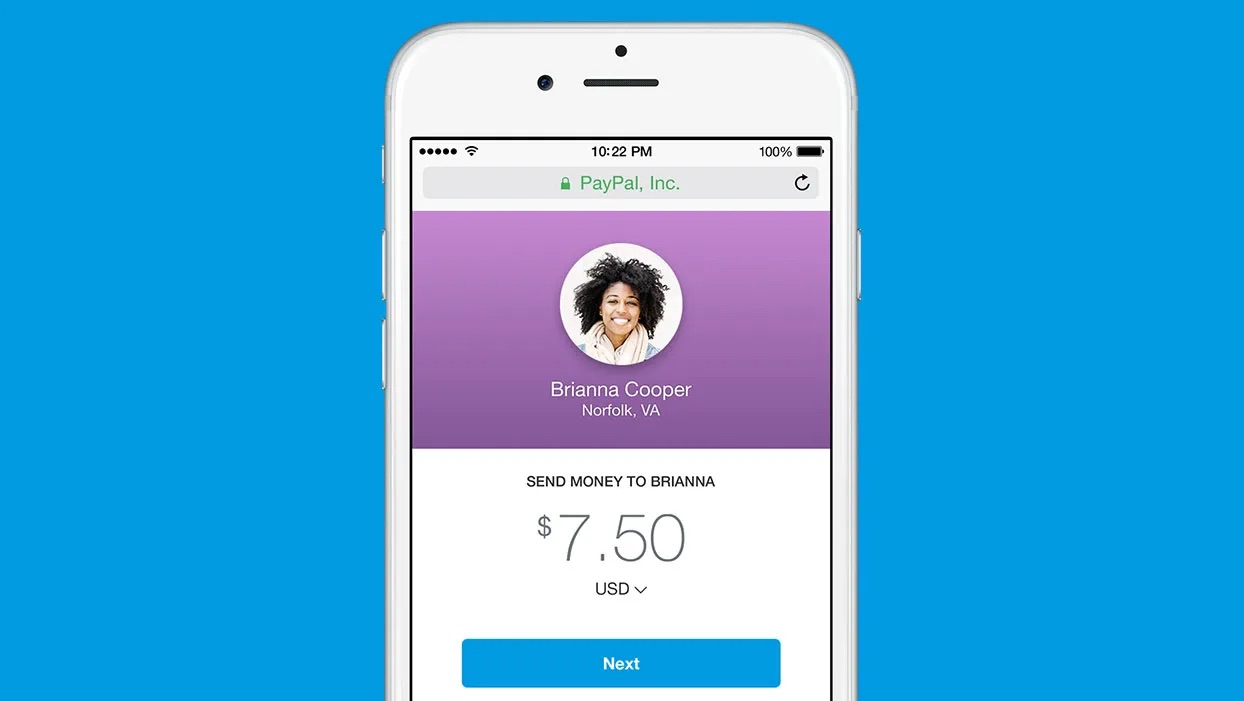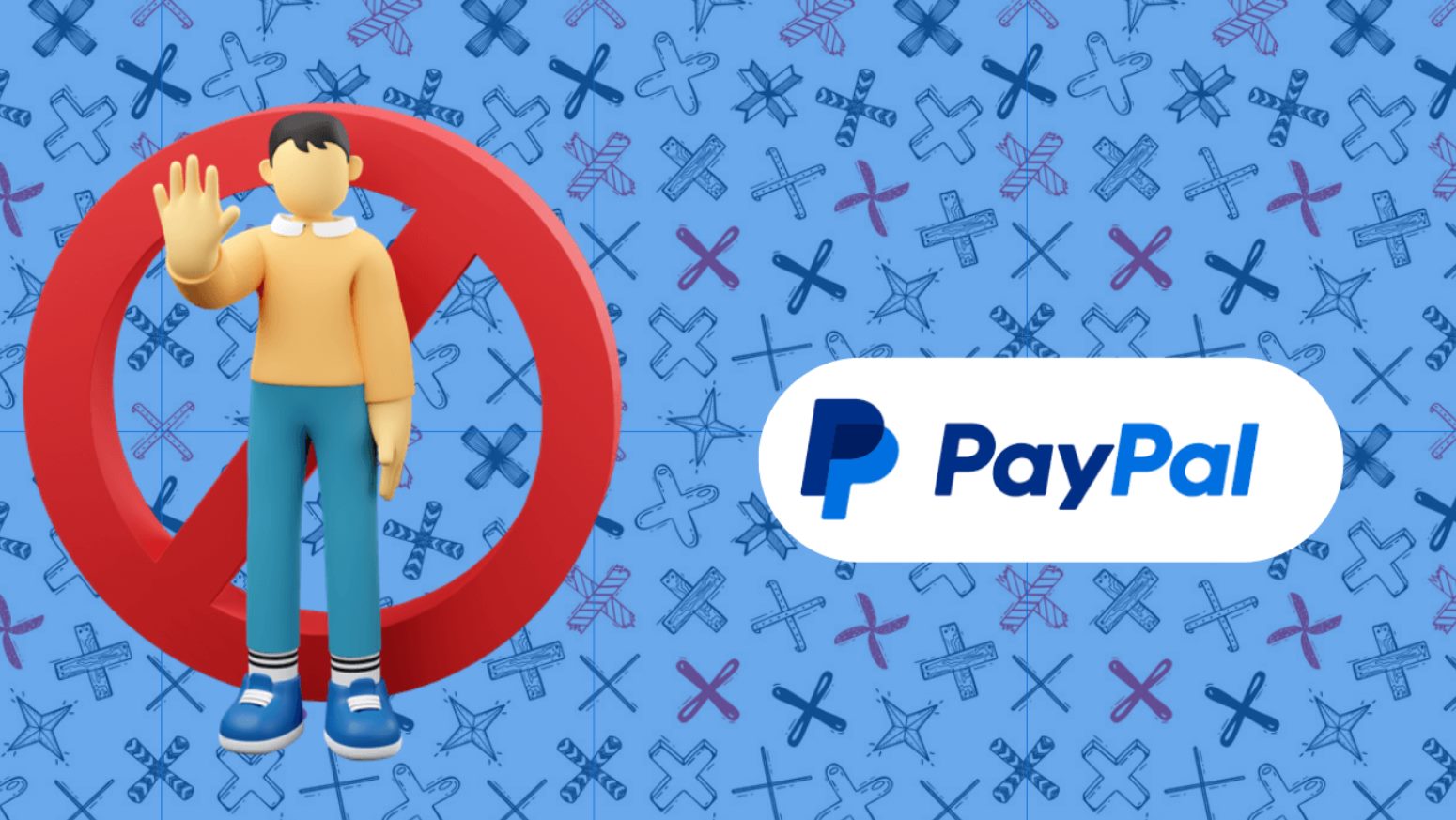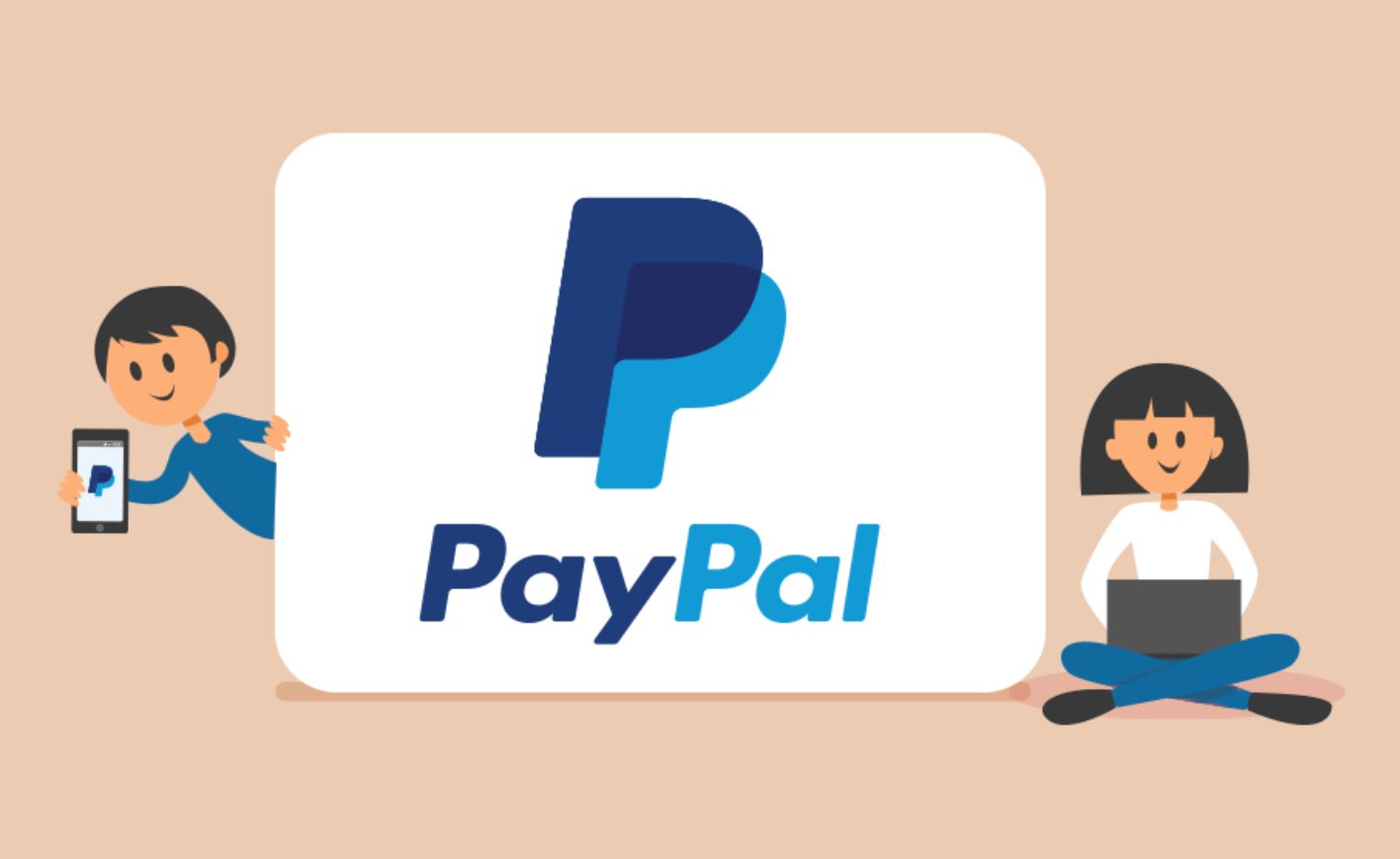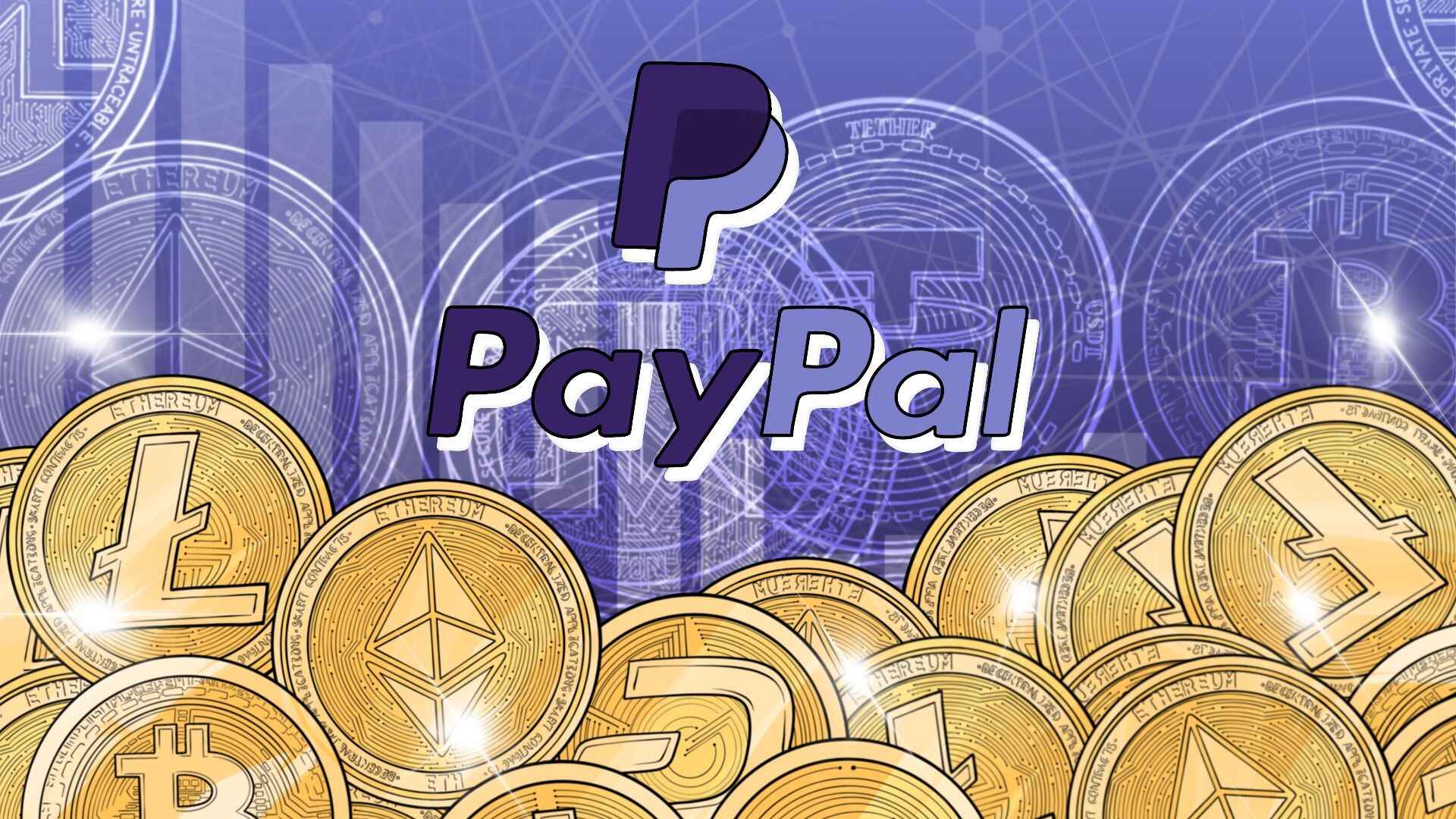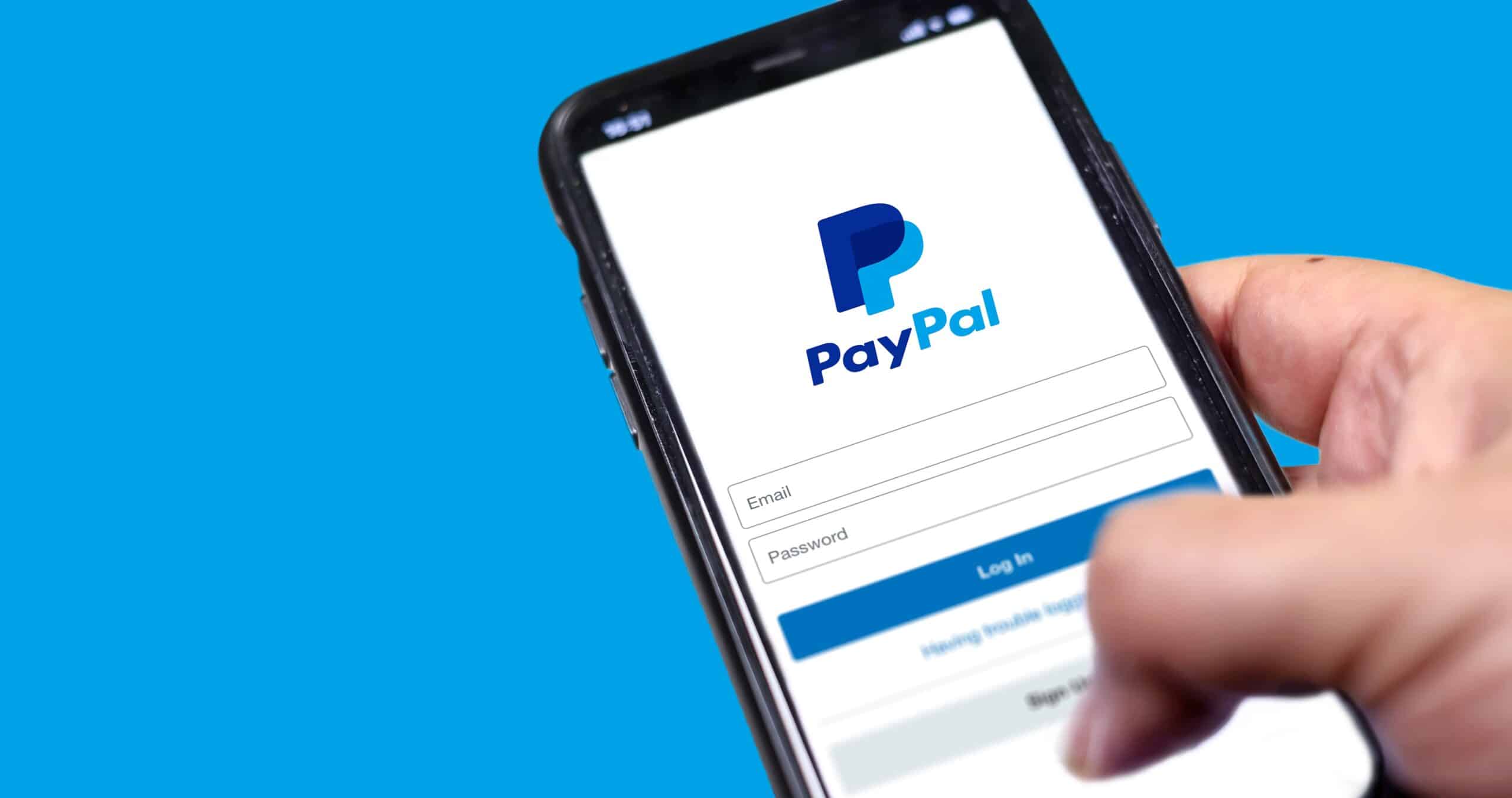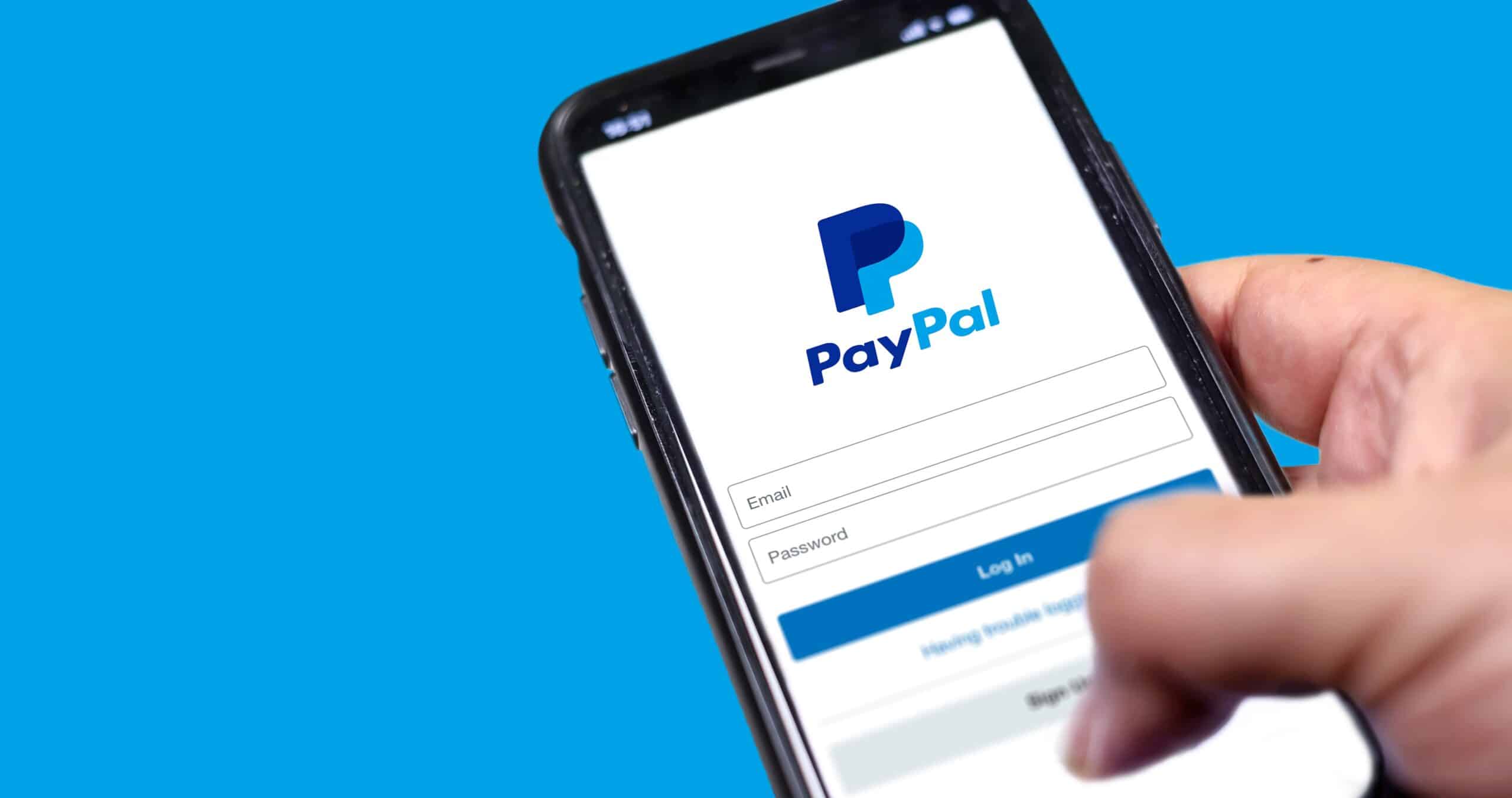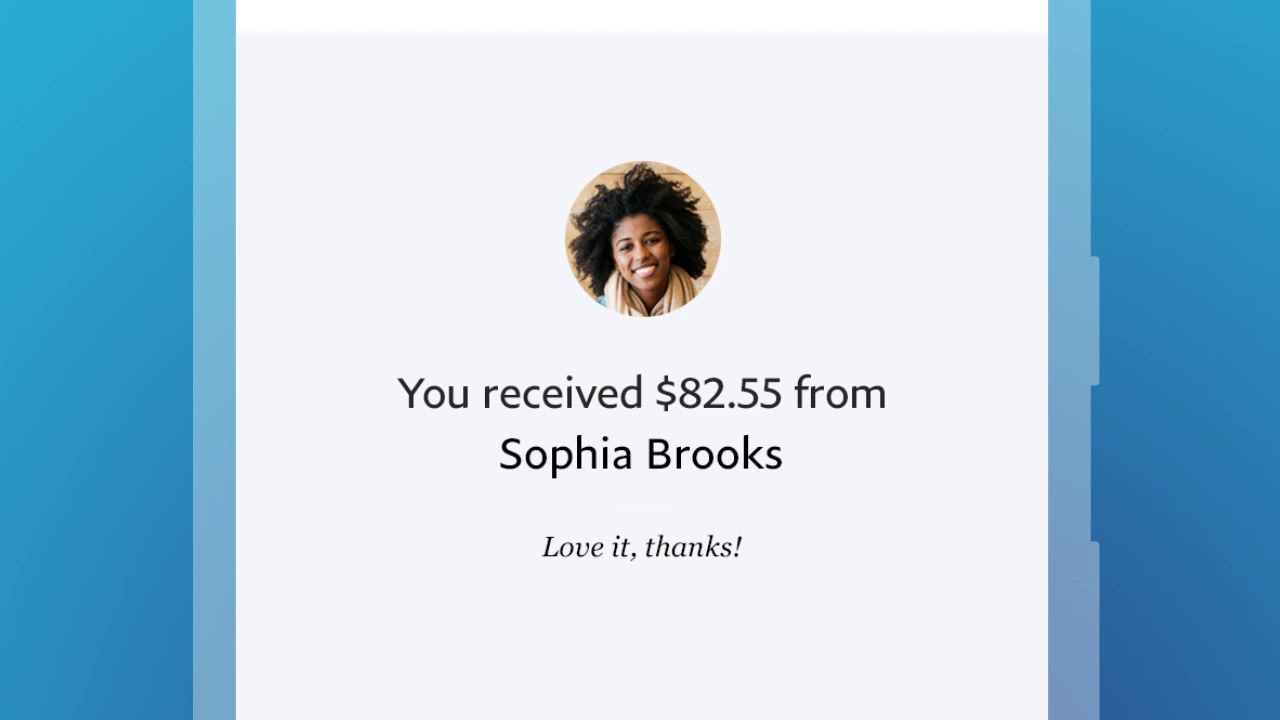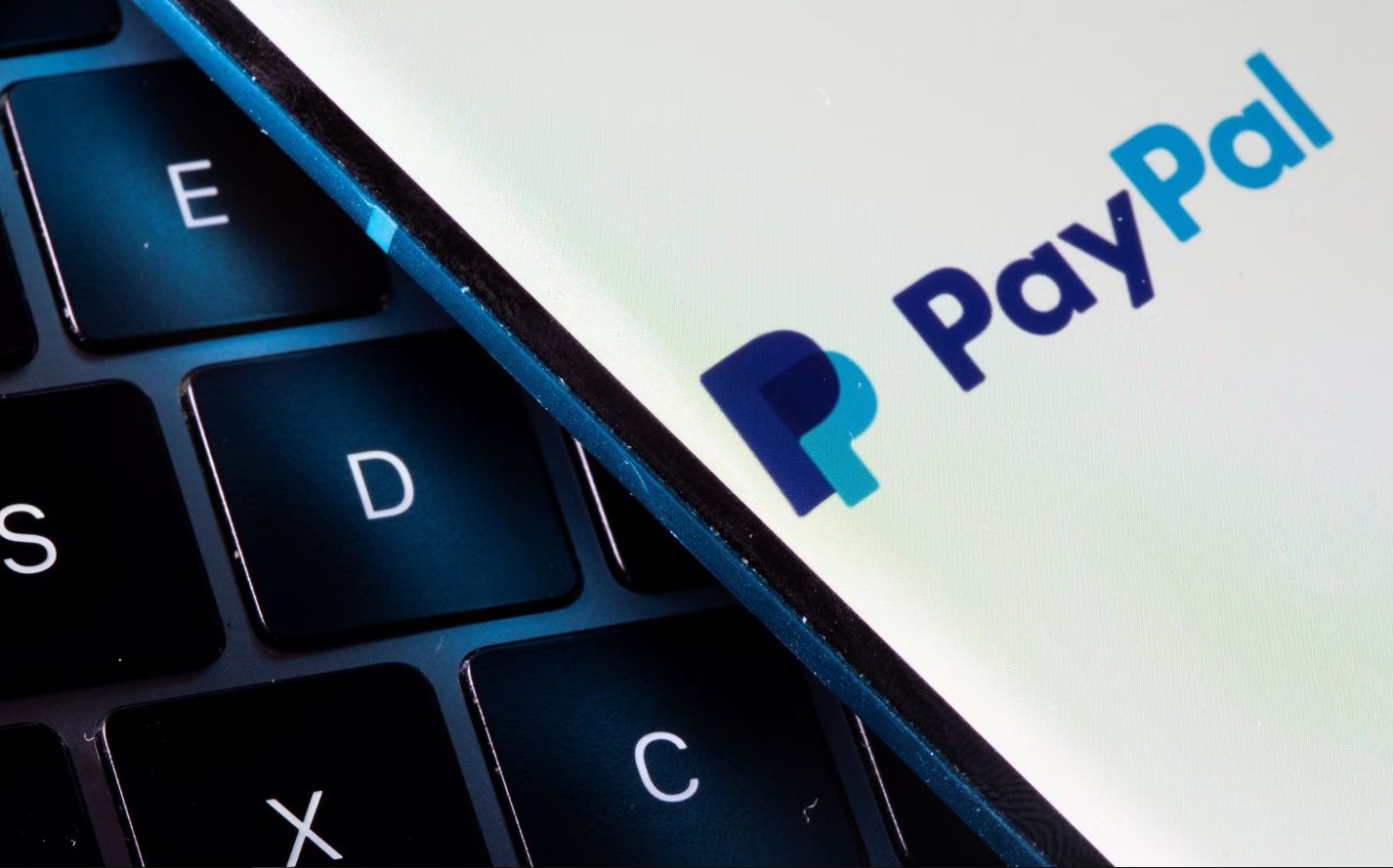Setting Up Your PayPal Account
PayPal is an online payment system that allows users to send and receive money electronically. Whether you’re selling products or services online, or simply need a reliable way to receive payments from friends and family, setting up a PayPal account is a simple and straightforward process.
To get started, visit the PayPal website and click on the “Sign Up” button. You will be prompted to choose between a personal or business account. If you’re an individual or occasional seller, a personal account should suffice. If you’re running a business or plan to receive payments on a regular basis, a business account is recommended.
Next, you’ll need to enter your basic information, such as your name, email address, and password. Be sure to choose a secure password that combines letters, numbers, and special characters to protect your account.
Once you’ve created your PayPal account, you’ll need to link it to a bank account or credit card to be able to receive funds. This step verifies your identity and ensures the security of your account. PayPal encrypts your financial information, so you can rest assured that your data is safe.
After linking your account, PayPal will make a small deposit into your bank account or charge a small amount to your credit card. This process usually takes a couple of business days. Once you see the deposit or charge on your bank statement, you’ll need to enter the exact amount to confirm your account.
With your PayPal account set up, you can now start sending or requesting payments. PayPal provides various options to send payment requests, including email, invoice, or sharing a payment link. Next, we’ll explore how to send a payment request using PayPal.
Sending a Payment Request
When you need to request payment from someone, PayPal offers a convenient method to do so. Whether you’re a freelancer, small business owner, or just collecting money from friends, sending a payment request through PayPal is a quick and secure way to receive funds.
To send a payment request, log in to your PayPal account and navigate to the “Request Money” tab. Here, you’ll have the option to enter the recipient’s email address, phone number, or PayPal.me link. Additionally, you can provide a detailed description or invoice number to specify the purpose of the payment request.
Once you’ve entered the necessary information, you can specify the currency, amount, and whether it’s a one-time request or a recurring payment. PayPal also allows you to set a due date for the payment, which helps ensure timely transactions.
After reviewing your payment request, you can add a personal message to further explain the reason for the payment. This step can help avoid confusion and provide clarity to the recipient about what they are paying for.
Once you’re satisfied with the payment request details, simply click on the “Request Money” button, and PayPal will send an email to the recipient with the payment request. They will receive a notification prompting them to review and fulfill the request.
It’s important to note that the recipient does not need to have a PayPal account to pay you. PayPal provides an option for non-PayPal users to make a payment through a secure guest checkout process. However, signing up for a PayPal account is free and offers additional features and benefits.
Now that you know how to send a payment request through PayPal, you can easily collect payments for your goods, services, or personal expenses. In the next section, we’ll explore the different ways to provide your PayPal email or link to receive payments.
Providing Your PayPal Email or Link
Once you’ve set up your PayPal account and are ready to receive payments, you’ll need to provide your PayPal email or link to those who wish to send you money. PayPal offers several options to share this information conveniently and securely.
The most common method is to provide your PayPal email address. This is the email associated with your PayPal account and is used by others to send payments to you. You can simply give your email address to buyers, clients, friends, or family members, and they can enter it manually when sending money through their PayPal account.
Another option is to use your PayPal.me link. PayPal.me is a personalized link that you can create and share with others. It allows people to make direct payments to you without even knowing your email address. To set up your PayPal.me link, log in to your PayPal account, go to the “Profile” section, and click on “PayPal.me.” Follow the instructions to customize and create your unique link.
Once you have your PayPal.me link, you can easily share it with others via email, social media, or any other preferred method. When someone clicks on the link, it will take them directly to a payment page with your information pre-populated. They can then enter the desired payment amount and complete the transaction.
Additionally, if you’re selling products or services on your website, you can integrate PayPal buttons or widgets. PayPal provides HTML code snippets that you can insert into your website to create a clickable payment button. This allows visitors to make payments directly on your site, providing a seamless and convenient way to send you money.
Remember to keep your PayPal email and link secure and share them only with trusted individuals. Avoid posting this information publicly or in unsecured channels to protect your account from unauthorized access or fraudulent activities.
Now that you know how to provide your PayPal email or link, you can start receiving payments effortlessly. In the next section, we’ll explore how you can customize and share your payment link to enhance your PayPal experience.
Customizing and Sharing Your Payment Link
Customizing and sharing your PayPal payment link not only adds a personal touch, but it also makes it easier for others to remember and recognize your payment request. PayPal offers various options to customize and share your payment link, allowing you to enhance your online presence and streamline the payment process.
One way to customize your payment link is by adding a personalized message or description. When sending a payment request through PayPal, you have the option to include a brief note or instructions for the recipient. This can be helpful in providing additional context or details about the payment, ensuring a smooth transaction.
In addition to a message, you can customize the appearance of your payment link. PayPal allows you to choose a specific name or label for your payment request. For example, if you’re a freelancer, you can create a payment link labeled “Freelance Services Payment” to clearly indicate the purpose of the payment. This customization helps recipients easily identify the payment and increases the professionalism of your payment requests.
Sharing your PayPal payment link is as important as customizing it. There are several ways to share your link effectively:
- Include the link in your email signature: Adding your PayPal payment link to your email signature allows recipients to access it easily when they read your emails. This is especially useful if you frequently communicate with clients or customers via email.
- Share the link on your website or blog: If you have a website or blog, consider adding your PayPal payment link to a prominent spot. This ensures that visitors can quickly find it and make payments without hassle.
- Use social media platforms: Leverage the power of social media to share your PayPal payment link. You can post it on your business or personal profiles, or even share it in relevant groups or forums.
- Include the link in invoices: If you send invoices to clients, make sure to include your PayPal payment link directly on the invoice. This makes it convenient for clients to make payments right from the invoice itself.
Remember to keep your payment links up to date and remove or update them when necessary. If your payment details change, make sure to update the link to avoid any confusion or delays in receiving payments.
By customizing and sharing your PayPal payment link effectively, you create a seamless and professional payment experience for both you and your customers. In the next section, we’ll look at how you can manage payments received through PayPal.
Managing Payments Received Through PayPal
Once you start receiving payments through PayPal, it’s important to stay organized and manage your incoming funds efficiently. PayPal provides various tools and features to help you easily keep track of your payments and streamline your financial management.
One of the key features you can use is the PayPal dashboard. This provides a summary of your recent transactions, including the date, time, and amount of each payment received. You can access the dashboard by logging into your PayPal account and navigating to the “Activity” or “Summary” section.
The dashboard also allows you to filter and search for specific transactions, making it convenient to find and review individual payments. You can sort transactions by date, payment status, or even search for specific email addresses or invoice numbers.
In addition to the dashboard, PayPal offers the option to generate and download detailed transaction reports. These reports can be useful for accounting purposes, as they provide a comprehensive overview of all transactions within a specified period. You can generate reports for specific dates, export them in various formats such as CSV or PDF, and use them for record-keeping or reconciliation.
For sellers, PayPal offers additional features to manage payments and orders. If you’re selling physical products, PayPal provides shipping integrations that allow you to print shipping labels and track shipments right from your PayPal account. This streamlines the order fulfillment process and provides a seamless experience for both you and your customers.
Another important aspect of managing payments is to verify that the funds have been successfully transferred to your PayPal account. PayPal provides notifications and email confirmations for each payment received. It’s recommended to regularly monitor these notifications and ensure that the funds are reflecting correctly in your PayPal balance.
If you encounter any issues or disputes with payments, PayPal offers a resolution center where you can initiate a dispute or claim. This can be helpful in resolving any payment-related problems and ensuring a fair resolution for both parties involved.
By effectively managing your payments received through PayPal, you can maintain transparency, accuracy, and accountability in your financial transactions. In the next section, we’ll explore how you can transfer funds from your PayPal account to your bank account.
Transferring Funds from PayPal to Your Bank Account
Transferring funds from your PayPal account to your bank account is a crucial step in accessing and using the money you receive through PayPal. PayPal offers a simple and secure process for linking your bank account and initiating transfers.
To transfer funds, first, ensure that you have linked your bank account to your PayPal account. If you haven’t done so already, you can add your bank account details by navigating to the “Wallet” section in your PayPal account and selecting “Link a bank account.” Follow the prompts to enter your bank account information and verify your identity, which may include providing details like your account number and routing number.
Once your bank account is linked, you can initiate a transfer from your PayPal account to your bank. To do this, log in to your PayPal account and go to the “Wallet” section. Here, you’ll see your available balance and an option to “Transfer Funds.” Click on this option and select the bank account you wish to transfer the funds to from the drop-down menu.
You’ll be asked to enter the amount you want to transfer. It’s important to note that there may be limits on the amount you can transfer per transaction, depending on your account status and verification level. PayPal will provide information on any applicable limits during the transfer process.
After confirming the transfer, PayPal will initiate the process of moving the funds from your PayPal account to your linked bank account. This transfer usually takes a few business days to complete, depending on your bank’s processing time. You can monitor the status of your transfer in the “Activity” section of your PayPal account.
It’s important to ensure that the bank account details you provide are accurate to avoid any delays or issues with the transfer. If you encounter any difficulties or errors during the transfer, PayPal has a dedicated customer support team available to assist you in resolving any problems.
Transferring funds from your PayPal account to your bank account allows you to access and utilize your funds as needed. It provides the flexibility to use the money for various purposes, whether it’s paying bills, making purchases, or saving for future expenses.
Next, we’ll explore the fees and charges associated with using PayPal for payments and transfers, ensuring you have a clear understanding of the costs involved.
Understanding PayPal Fees and Charges
When using PayPal for payments and transfers, it’s important to understand the fees and charges associated with the service. While PayPal offers convenient and secure transactions, there are costs involved which vary depending on the type of transaction and specific circumstances.
One of the most common fees associated with PayPal is the transaction fee. This fee is applicable when you receive payments for goods or services. The transaction fee is usually a percentage of the total payment received, plus a fixed fee per transaction. The exact fee structure depends on factors such as the country where the transaction occurs, the currency used, and the type of PayPal account you have.
In addition to the transaction fee, PayPal may also charge a currency conversion fee if the payment involves different currencies. If you receive a payment in a currency different from your primary currency, PayPal will convert the amount at a specified exchange rate. This conversion incurs a fee, which is also dependent on factors such as the country and currency involved.
When transferring funds from your PayPal account to your bank account, PayPal may charge a withdrawal fee. This fee is typically a fixed amount per transfer and varies depending on the country and currency of the transfer. It’s important to review and understand the applicable withdrawal fee before initiating a transfer.
It’s worth noting that PayPal offers certain fee structures and discounts for high-volume merchants, non-profit organizations, and specific business categories. If you fall into any of these categories, it’s recommended to explore the PayPal website or contact customer support to understand the specific fee arrangements available to you.
Along with fees, PayPal may impose limits on certain transactions, such as the maximum amount you can send or receive or the number of transactions you can make within a specific period. These limits aim to ensure the security and compliance of PayPal’s services and may vary depending on factors such as your account status, verification level, and transaction history.
It’s essential to review and understand the applicable fees and limits associated with your PayPal account to avoid any surprises or misunderstandings. PayPal provides detailed information about fees and charges on their website, and you can access this information by visiting the PayPal Fee page or by contacting their customer support team for assistance.
Now that you have a better understanding of PayPal fees and charges, you can make informed decisions and manage your transactions accordingly. In the next section, we’ll explore the security measures you can take to protect your PayPal account.
Security Measures to Protect Your PayPal Account
Ensuring the security of your PayPal account is crucial to safeguard your funds and personal information. PayPal takes security seriously and provides several measures to help protect your account from unauthorized access and fraudulent activities. By following these security practices, you can enhance the protection of your PayPal account.
1. Create a strong and unique password: Choose a password that includes a combination of letters, numbers, and special characters. Avoid using easily guessable information such as your name or birthdate. Regularly update your password and avoid reusing it for other accounts.
2. Enable two-factor authentication: Two-factor authentication provides an extra layer of security by requiring a second verification step, such as a unique code sent to your mobile device or email. Enable this feature in your PayPal account settings to protect your account even if someone obtains your password.
3. Be cautious of phishing attempts: Be wary of emails or messages that seem to be from PayPal but ask for your personal information or account details. Always login to your PayPal account directly through the official website rather than clicking on suspicious links or providing information through email.
4. Regularly review your account activity: Take the time to review your PayPal account activity regularly. Look for any unfamiliar transactions or changes to your account settings. If you notice anything suspicious, report it to PayPal immediately and take necessary action to secure your account.
5. Keep your devices and software updated: Ensure that your computer, smartphone, and other devices are running the latest operating systems and security patches. This helps protect against vulnerabilities that hackers may exploit to gain unauthorized access to your account.
6. Avoid using public Wi-Fi for PayPal transactions: Public Wi-Fi networks can be insecure, making it easier for hackers to intercept sensitive information. If possible, use a secure and private network when accessing your PayPal account to protect your data.
7. Use a secure network and device: When accessing your PayPal account, make sure you’re using a trusted and secure network. Avoid using shared or public computers, as they may have keyloggers or other malicious software that can compromise your account information.
By following these security measures, you can reduce the risk of unauthorized access to your PayPal account and minimize the chances of falling victim to fraud. PayPal also provides additional security tools and resources on their website to help you stay protected.
Now that you know how to protect your PayPal account, you can confidently use the platform for secure and convenient online transactions. In the next section, we’ll discuss using PayPal for international transactions and the benefits it offers.
Using PayPal for International Transactions
PayPal offers a convenient and secure method for conducting international transactions, making it easier to send and receive funds across borders. Whether you’re a freelancer working with international clients or an e-commerce business selling products globally, PayPal provides several benefits for international transactions.
One of the key advantages of using PayPal for international transactions is the ability to accept payments in multiple currencies. PayPal supports a wide range of currencies, allowing you to receive payments in the currency of your choice. This eliminates the need for manual currency conversions and reduces the complexity of dealing with international payments.
When you receive an international payment in a different currency, PayPal automatically converts the funds to your primary currency based on the prevailing exchange rate. PayPal provides a transparent view of the conversion rate and any applicable currency conversion fees, allowing you to know exactly how much you’ll receive in your local currency.
In addition to currency conversion, PayPal handles the complexities of cross-border transactions, including language and cultural differences. PayPal provides a seamless and user-friendly experience for both you and your international customers, regardless of their location or language preferences.
PayPal also offers buyer and seller protection programs for international transactions, providing peace of mind for both parties involved. These programs help safeguard against fraud, disputes, and unauthorized transactions, enhancing the overall security of cross-border payments.
Another advantage of using PayPal for international transactions is the availability of PayPal seller protection. This protection helps protect sellers from certain fraudulent claims or chargebacks, providing added security and confidence when selling to customers abroad.
Furthermore, PayPal simplifies the process of refunding international payments. If you need to issue a refund to an international customer, PayPal handles the refund process and ensures that the amount is returned to the customer in their original currency, based on the exchange rate at the time of the transaction.
It’s important to note that PayPal charges fees for international transactions, including currency conversion fees and cross-border transaction fees. These fees vary depending on the country, currency, and specific circumstance of the transaction. It’s advisable to review the applicable fees and consult PayPal’s website for detailed information.
By utilizing PayPal for international transactions, you can expand your reach, accept payments from customers worldwide, and simplify cross-border financial transactions. PayPal’s robust features, currency conversion capabilities, and buyer and seller protection programs make it an ideal choice for businesses and individuals engaged in global commerce.
In the next section, we’ll address some frequently asked questions about PayPal payments and provide further clarification on important aspects.
Frequently Asked Questions about PayPal Payments
As a widely-used online payment system, PayPal often raises questions and curiosity about its functionalities and processes. Here are some frequently asked questions about PayPal payments, along with their answers:
1. Is PayPal safe to use?
Yes, PayPal is generally considered safe and secure. It uses encryption and other security measures to protect your financial information. Additionally, PayPal offers buyer and seller protection programs to help resolve disputes and provide added security.
2. Can I use PayPal without a bank account?
Yes, you can use PayPal without a bank account by linking your credit or debit card to your PayPal account. However, having a bank account linked to your PayPal account provides more flexibility for sending and receiving funds.
3. Are there any fees for using PayPal?
There are fees associated with certain PayPal transactions. Fees may apply when receiving payments for goods or services, currency conversions, or when withdrawing funds to your bank account. The specific fees depend on factors such as the country, currency, and type of transaction.
4. Can I use PayPal for international transactions?
Yes, PayPal supports international transactions and allows you to send and receive payments worldwide. It supports multiple currencies and provides automatic currency conversion for cross-border payments.
5. Can I use PayPal to send money to friends and family?
Yes, PayPal offers the option to send money to friends and family. This service is free when sending money within the same country, and you can use your PayPal balance or linked bank account to send the payment.
6. How long does it take for PayPal transfers to go through?
The time it takes for PayPal transfers to go through can vary. For transfers from your PayPal account to your bank account, it typically takes a few business days. However, transfers to other PayPal accounts are usually instant.
7. Can I use PayPal for e-commerce or to sell products online?
Yes, PayPal is widely used for e-commerce and selling products online. It provides secure payment processing options, allows you to add PayPal buttons to your website, and offers features like shipping integrations and seller protection for a smoother selling experience.
8. Can I refund a payment made through PayPal?
Yes, PayPal allows you to issue refunds for payments made through their platform. You can initiate refunds directly from your PayPal account, and the refunded amount will be returned to the buyer’s PayPal account or their original payment method.
9. Can I use PayPal for recurring payments or subscriptions?
Yes, PayPal offers options for setting up recurring payments and subscriptions. This feature is useful for businesses or individuals who provide ongoing services or products with regular payment intervals.
Remember, these answers are general guidelines, and specific details may vary depending on your location, account type, and other factors. For more detailed and personalized information, it’s recommended to visit the official PayPal website or contact their customer support.
Now that you have a better understanding of PayPal payments and processes, you can confidently utilize this popular online payment system for your personal and business transactions.







